Use cases
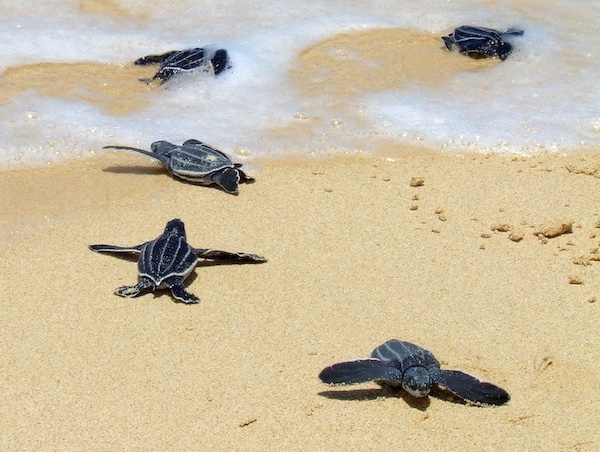
State of knowledge on marine connectivity gathered by migratory marine species
Advancements in technology have improved our knowledge of how different areas of the ocean are connected by the movement of migratory and mobile marine species. This information is vital to inform area-based management and conservation efforts. The authors of this ...
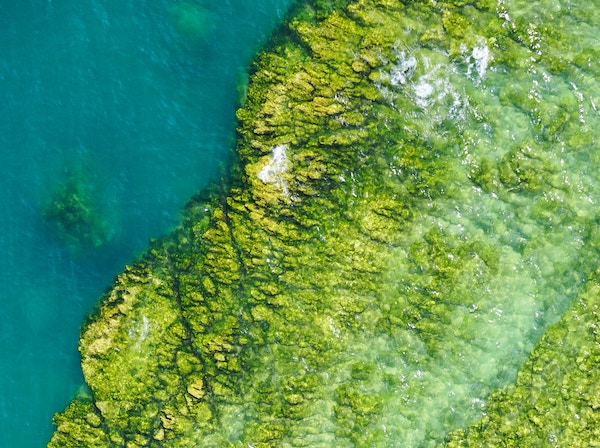
Invasive marine algae in the Mediterranean was misidentified for decades
The red algae, "Lophocladia lallemandii", one of the worst invasive species in the Mediterranean, was misidentified for nearly three decades. The researchers who discovered this error recommend genetic analysis as a mandatory first step when identifying, monitoring and managing invasives. ...
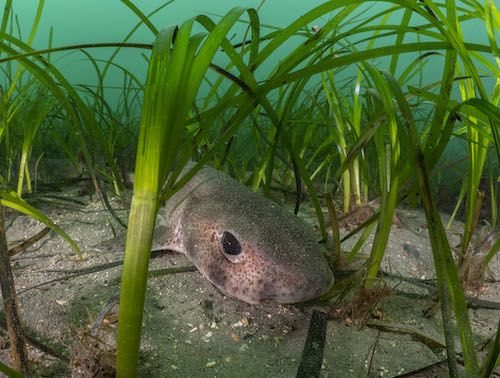
Preserving seagrasses in a changing climate
This study provides the first comprehensive global assessment of how climate change may affect the distribution and range of 66 seagrass species. It also examines how well the current global MPA coverage will protect these important ecosystems in the future. ...

Metabarcoding is a promising tool for identifying species of fish from their eggs and larvae
Understanding the diversity and distribution of fish egg and larvae in the ocean provides invaluable information on ecosystem health, capacity to recover from disturbances and helps guide management and conservation efforts. This study shows that metabarcoding is a promising tool ...
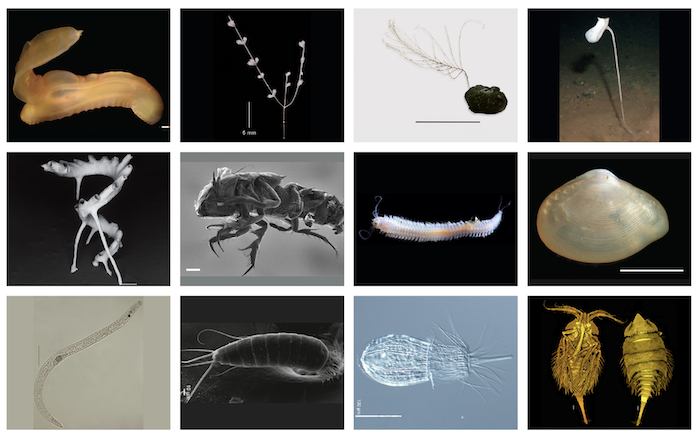
How many species live in the world’s largest marine mineral exploration region?
This study offers the first comprehensive synthesis of published data for the Clarion-Clipperton Zone (CCZ) in the central and eastern Pacific. The authors report that this area, which covers 6 million km2, represents significant undescribed biodiversity with an estimated 88%–92% ...
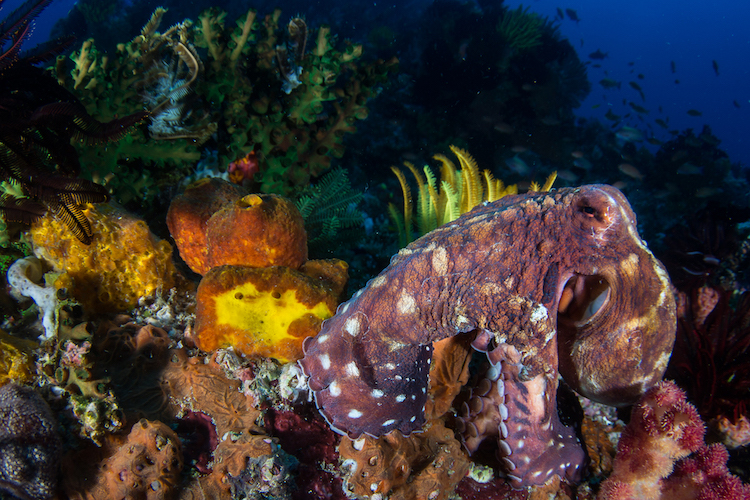
Current knowledge on the reproduction of deep-sea corals
This study looks at the current state of research on the reproduction of deep-sea corals. Occurrence records were extracted from OBIS to find available information for species living at depths below 100m. Less than 7% of known deep-sea coral species ...
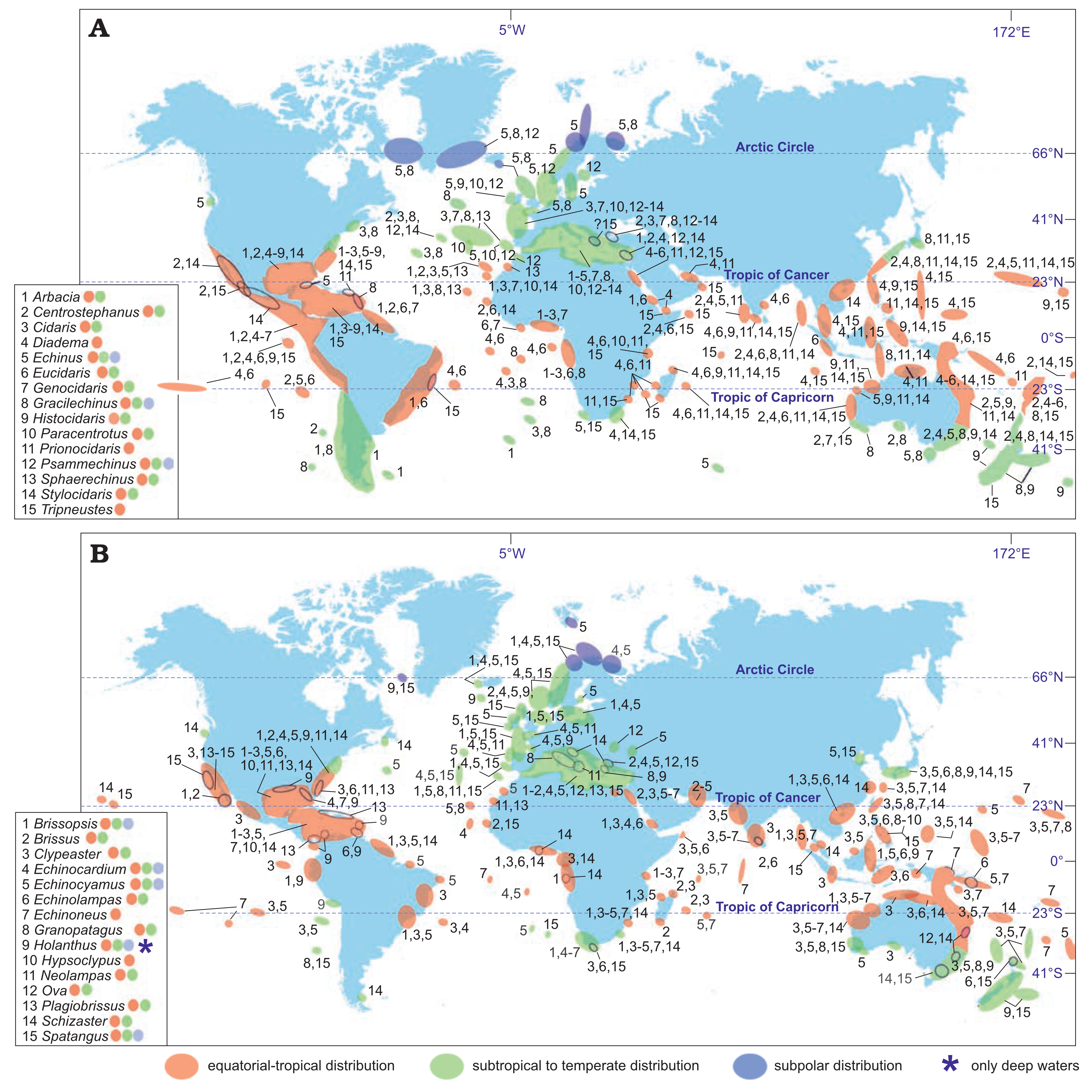
Climate-driven diversity changes of Mediterranean echinoids over the last 6 Ma
Echinoids are an important component of the Cenozoic marine benthic communities. In this publication, we review their diversity in the Mediterranean area within the Late Miocene to recent, a period of remarkable paleogeographic and paleoclimate changes.
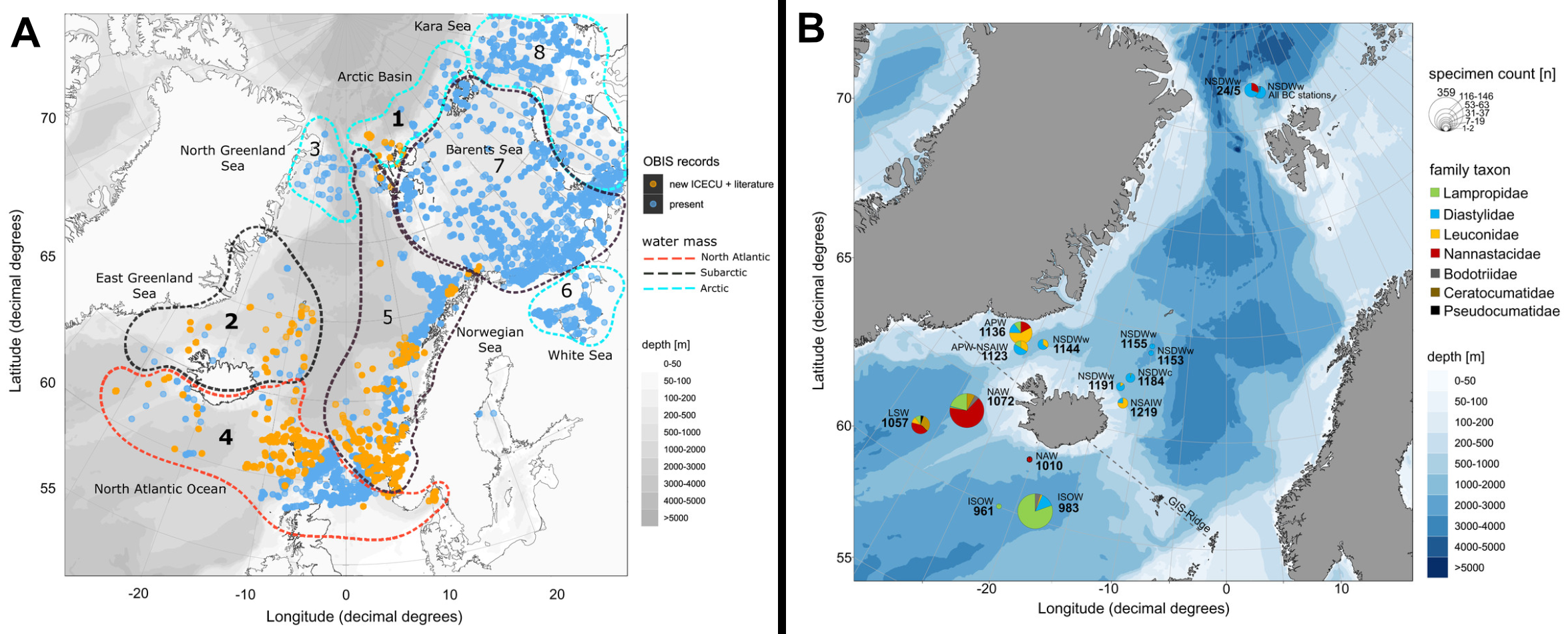
Cumacea (Peracarida) from the deep Nordic Seas
This study compiled and analysed occurrence records of Cumacea from various courses and expeditions, including those available in OBIS, to provide insight into the diversity and distribution of the group from the deep North Atlantic to the Arctic Ocean. The ...
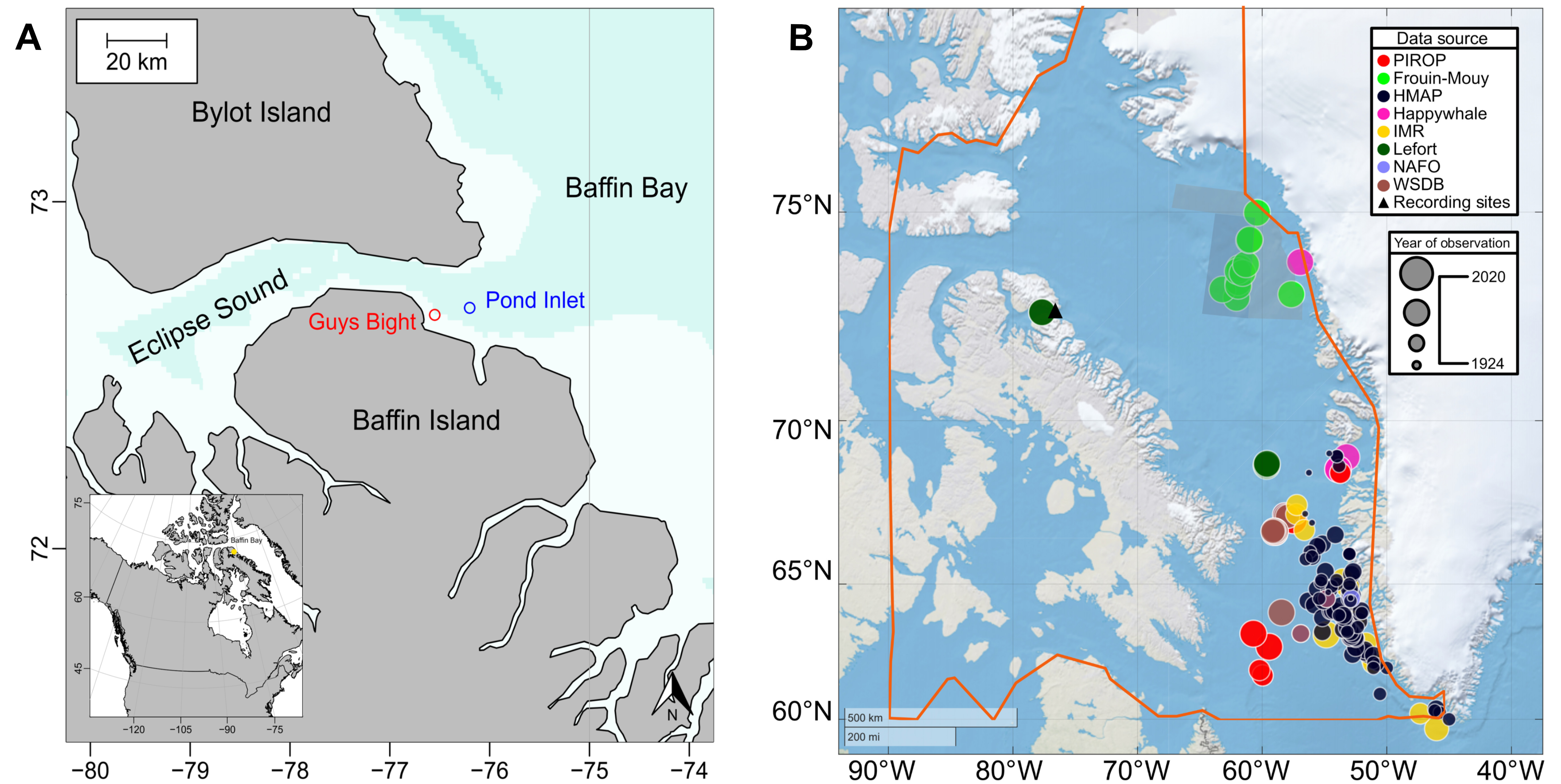
Detecting sperm whales in the eastern Canadian Arctic as sea-ice continues to melt
Marine environments in the Arctic regions continue to be altered due to prolonged durations of sea ice absence, as a result of climate change. Seasonal shifts of habitat use occur as warmer, ice-free regions become available to many ice avoiding ...
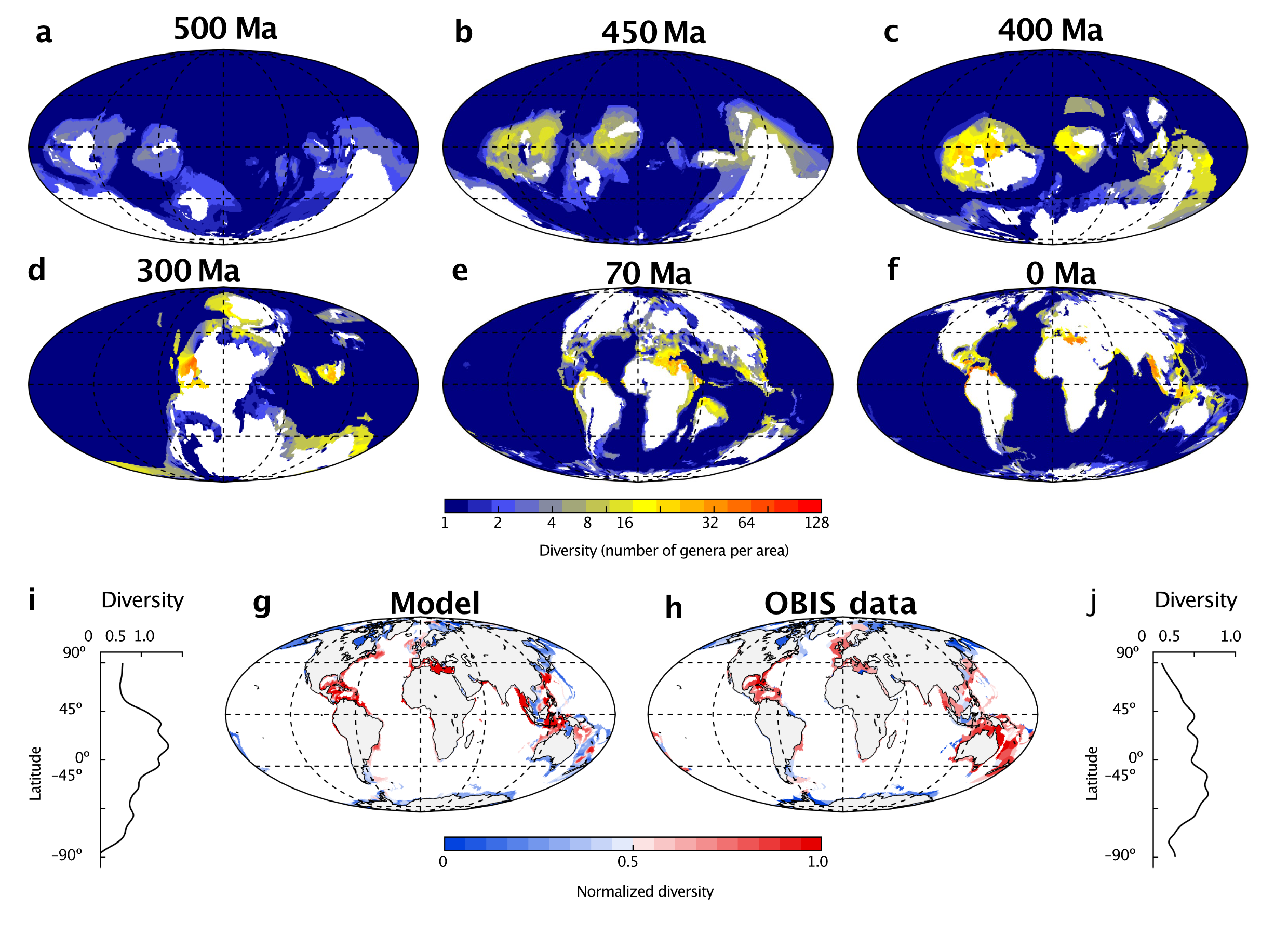
Reconstructing ocean biodiversity hotspots of the Phanerozoic
Is there a limit to global biodiversity in our oceans? This recent study published in Nature using data from OBIS sheds some new insight into this controversial topic in evolutionary ecology and has led to the authors proposing a new ...
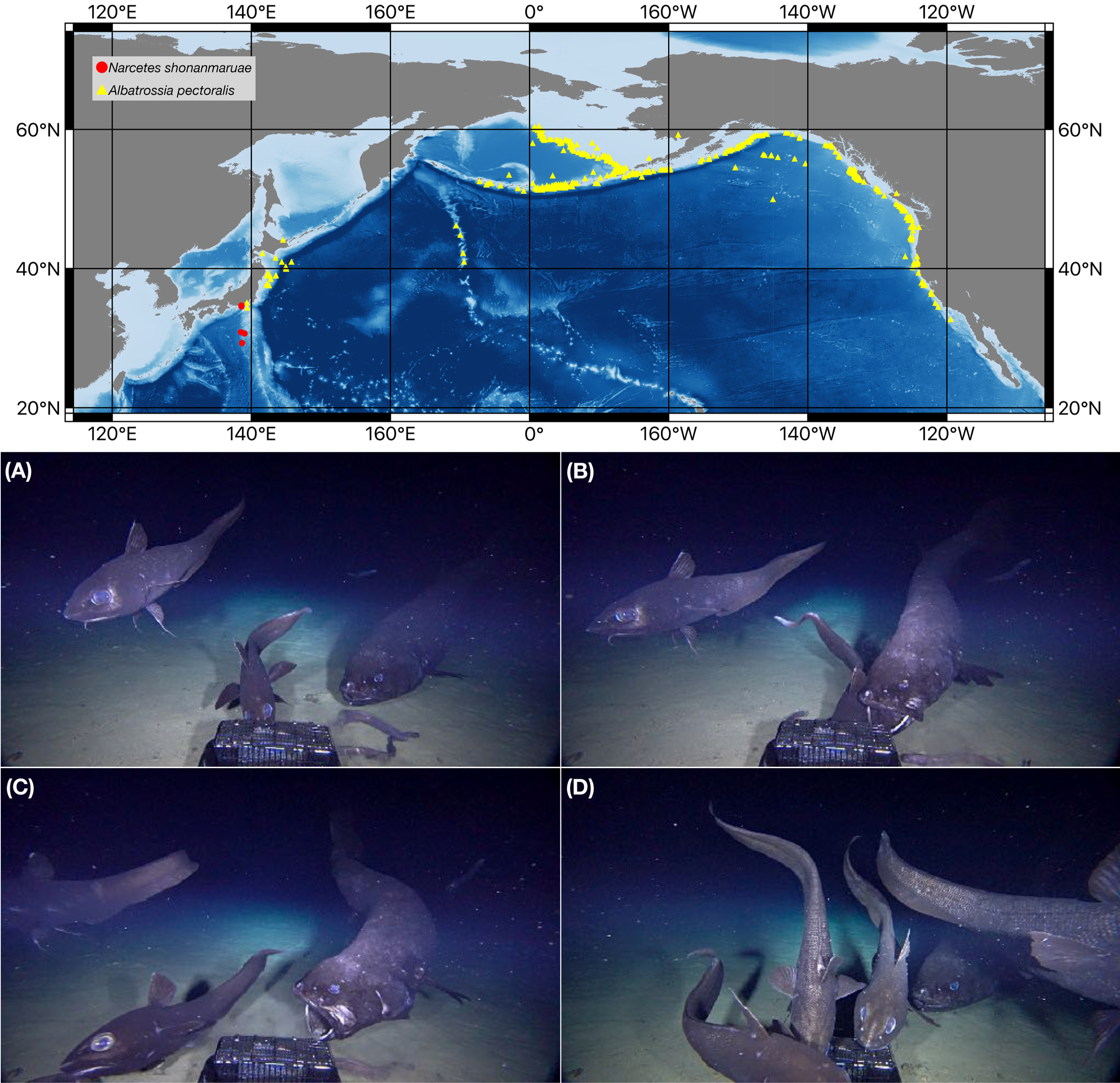
Detecting life in the deep-sea: a glimpse of the top predator, the Yokozuna Slickhead in Japanese waters.
New insights and video footage of possibly the largest deep-sea-endemic predatory teleost fish species, the Yokozuna Slickhead, using a combination of eDNA metabarcoding and baited camera observations, at depths of 2000 m. OBIS occurrence data contributed to the distributional comparison ...
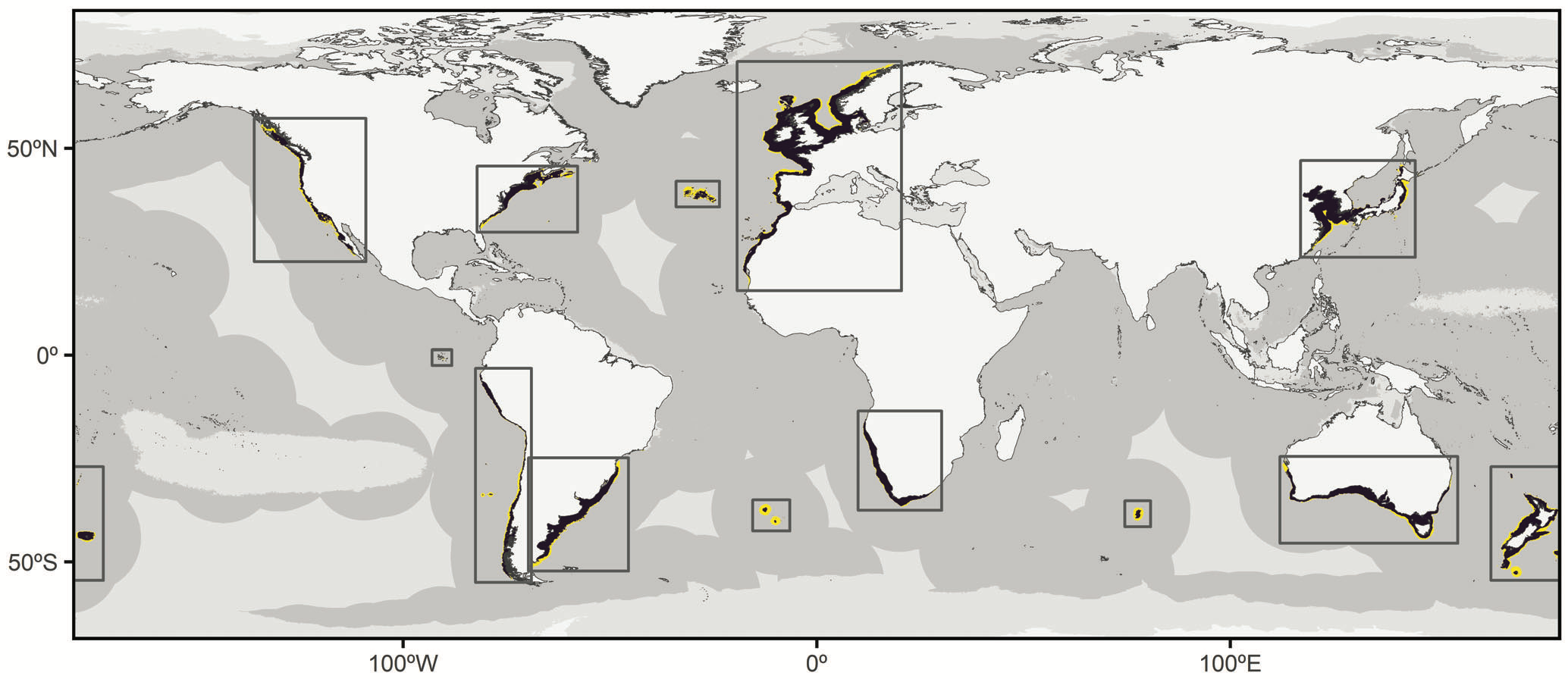
Predicting global distribution and population connectivity – the predatory broadnose sevengill shark as an example.
Presence data sourced from OBIS, amongst other repositories and literature sources, contributed to predicting the global possible suitable habitat for a highly mobile predator shark, the broadnose sevengill shark, based on environmental niche modeling.
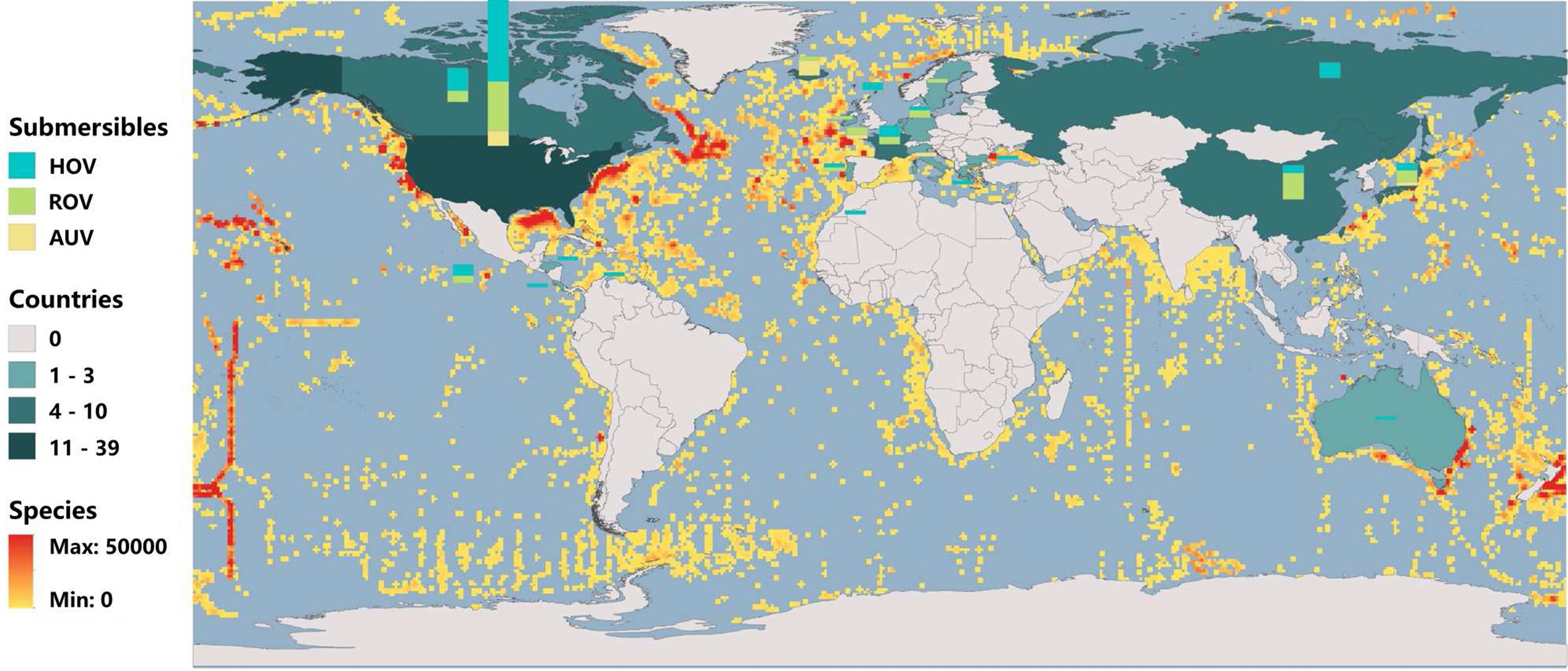
Discovering life in extreme environments with deep-sea equipment
The development of deep-sea equipment has allowed researchers to start to unveil the vast biodiversity and ecosystems in the extreme deep-sea environments. Discoveries of deep-sea species, based on occurrences from the OBIS database, were compared to the global distribution of ...
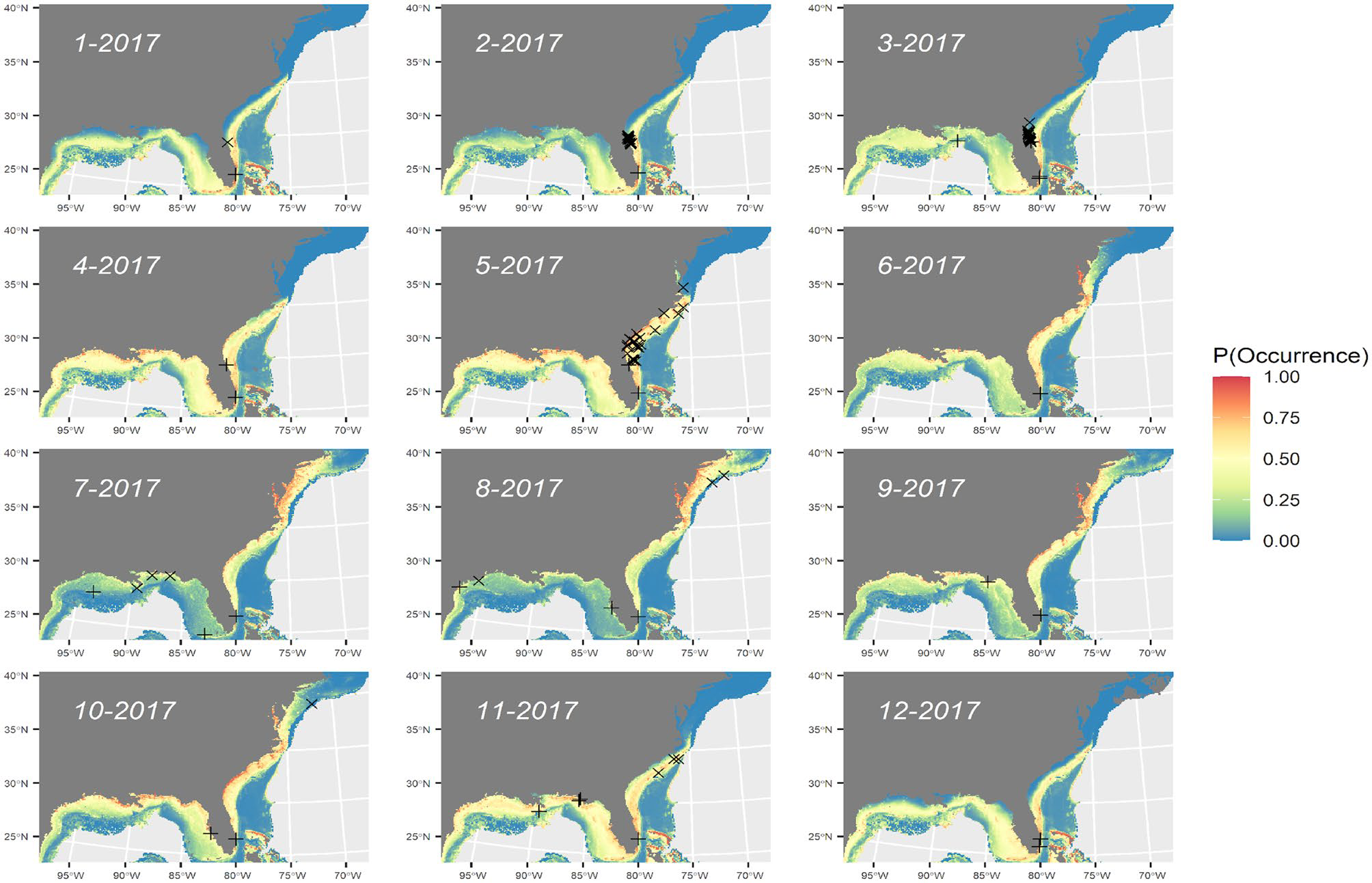
Giant manta ray distribution in the western North Atlantic Ocean
Species distribution modeling (SDM) as a tool to predict the probability of occurrence for giant manta rays in the western North Atlantic Ocean. The data from this study is based on occurrence records and decades of sighting data from OBIS ...
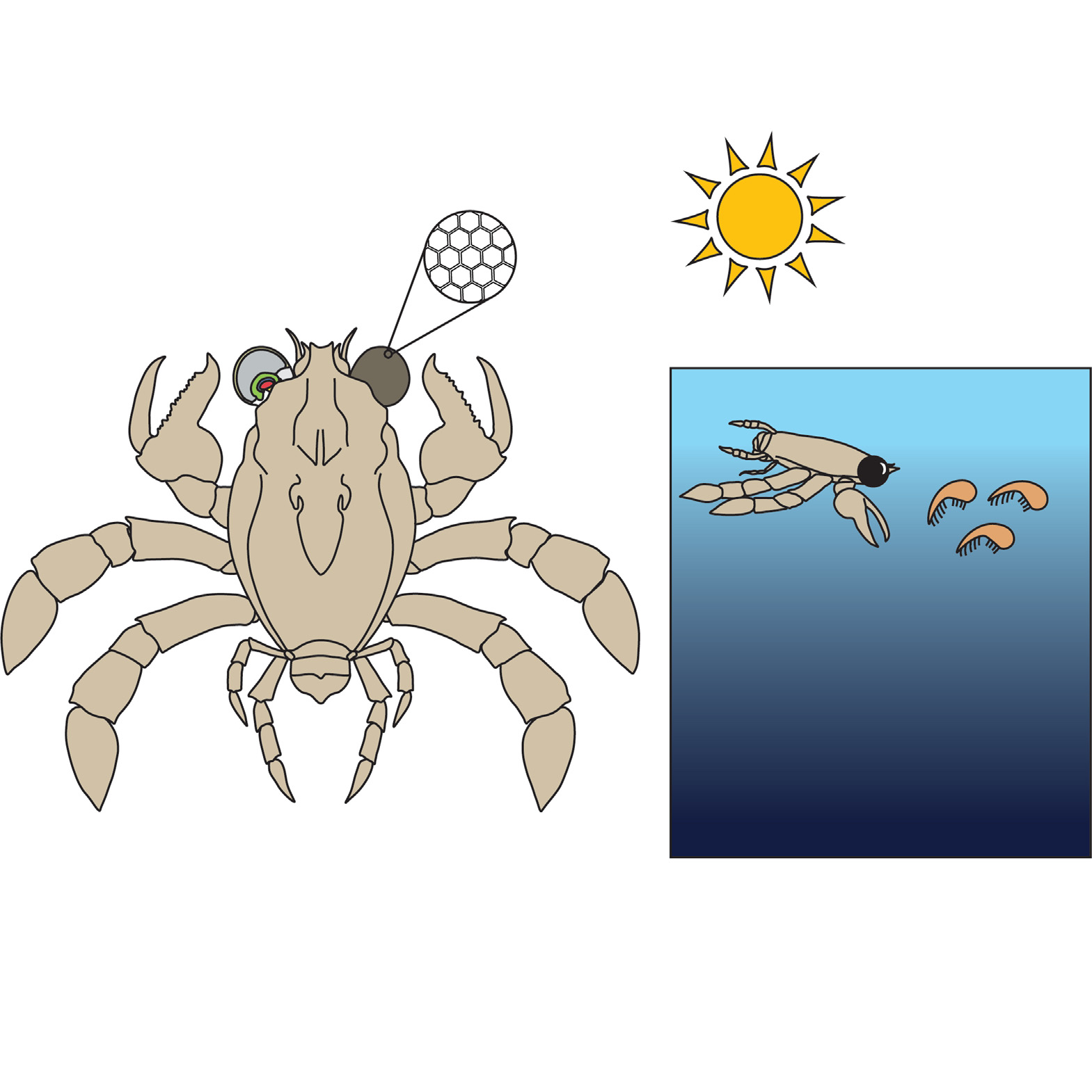
Through the eyes of a Cretaceous crab
By extracting depth data of extant benthic and pelagic Brachyuran crabs from the OBIS database, along with habitat and lifestyle information, authors were able to interpret the fossil species examined herein, to have been an active swimmer, most likely hunting ...
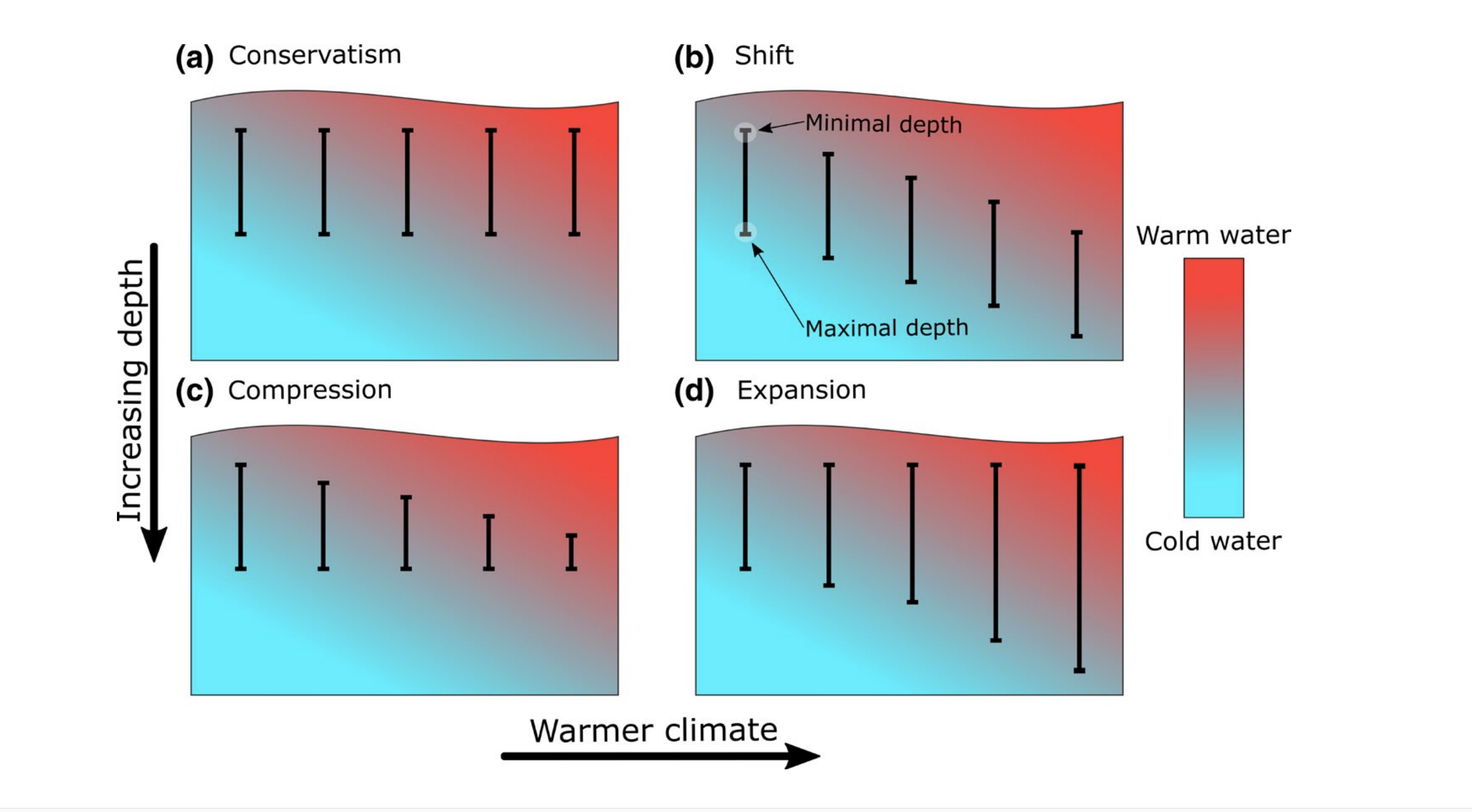
Cold-water species deepen to escape warm water temperatures
How species traits of cephalopods and malacostracans, extracted from the OBIS database contributed to evidence of cold-water species deepening in response to warming waters in the Mediterranean Sea.
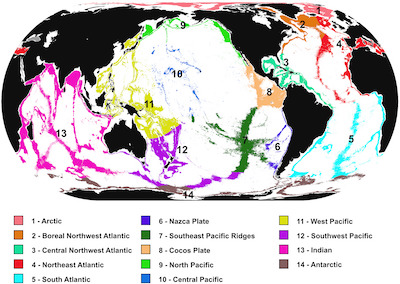
How anthozoan distribution records from OBIS contribute to the global biogeography of the ocean midnight zone
A global analysis of the benthic fauna of the lower bathyal using data from OBIS revealed a surprisingly high level of endemism. The study published in March 2022 by Watling & Lapointe (2022) proposed a revision of the bathyal provinces ...
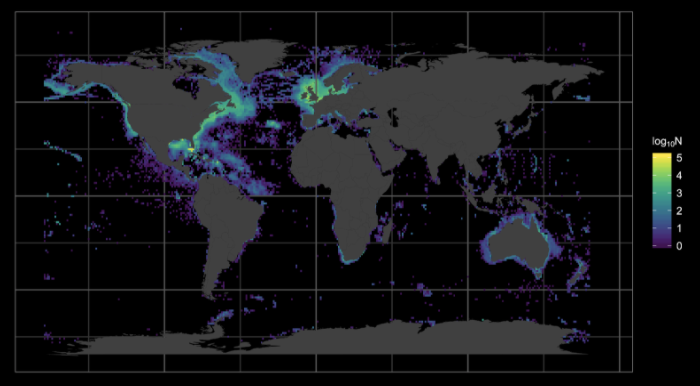
Occupancy‐derived thermal affinities reflect known physiological thermal limits of marine species
In this study we used the robis package to extract 2,176,906 OBIS occurrence records for 533 marine species from 24 taxonomic classes for which we had access to experimentally derived thermal limits. By linking these occurrence records to global sea ...
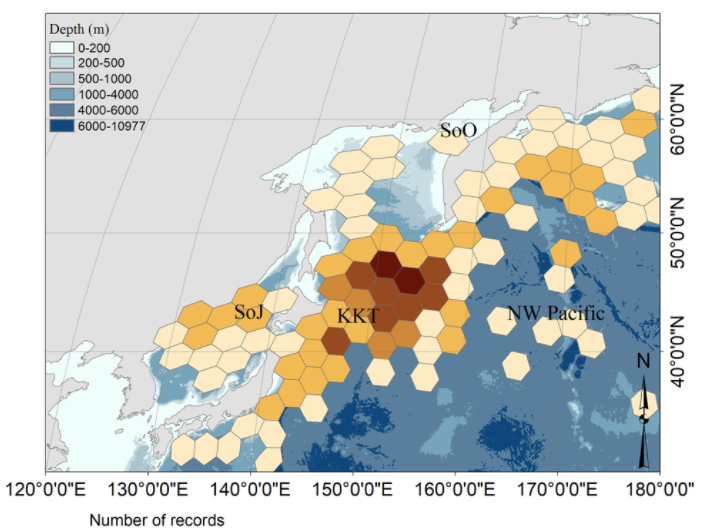
(free e-book) Biogeographic Atlas of the Deep NW Pacific Fauna
The Biogeographic Atlas of the Deep NW Pacific Fauna’ has been published by Pensoft as an open-access e-book, after a three-year intense collaboration of more than 40 deep-sea experts around the word. This book is designed as a guide, synthesis, ...
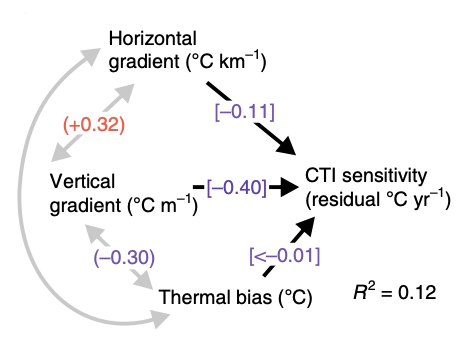
Some fish go deeper to cool off in warming seas
A study published in the journal Nature Climate Change using OBIS data showed how fish, demersal and planktonic communities changed as warm-water species increase and cold-water marine species become less successful due to climate warming.
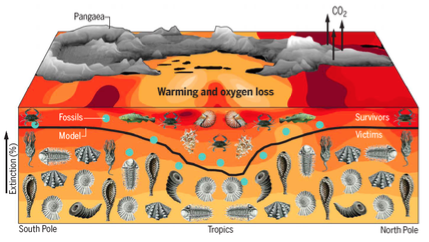
The great dying at the end of the Permian linked to ocean warming and oxygen loss
A study published in Science using historical data of ocean warming and oxygen loss, combined with species traits and occurrence data from OBIS revealed patterns of habitat loss and extinction at the end of the Permian period.
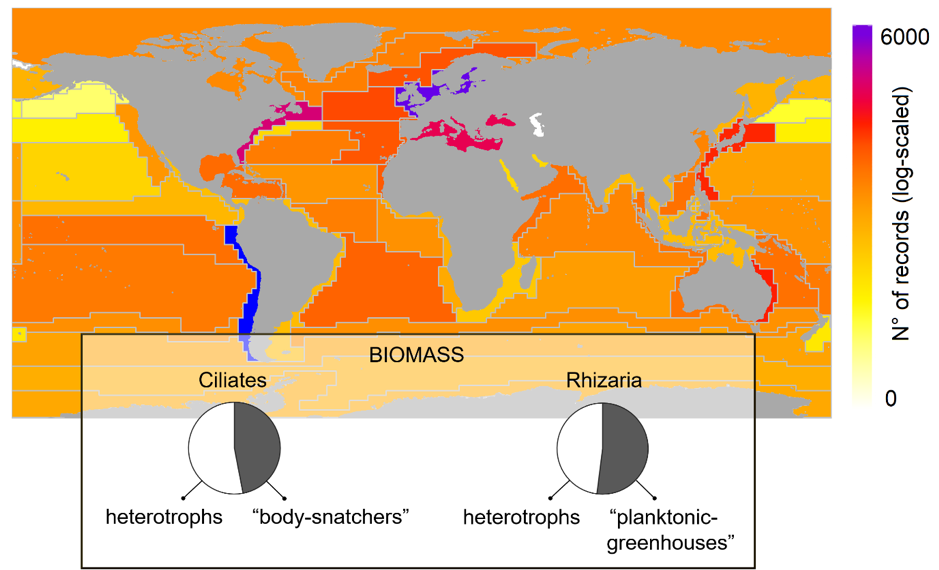
Microscopic “body-snatchers” and “planktonic-greenhouses” are ubiquitous with contrasting biogeographies and abundance in our oceans
A study published in Proceedings of the Royal Society B using data from OBIS investigated for the first time the biogeography of mixotrophs, planktonic species which acquire phototrophic capability from their prey. The study shows that “body-snatchers”, (e.g., ciliates, which ...
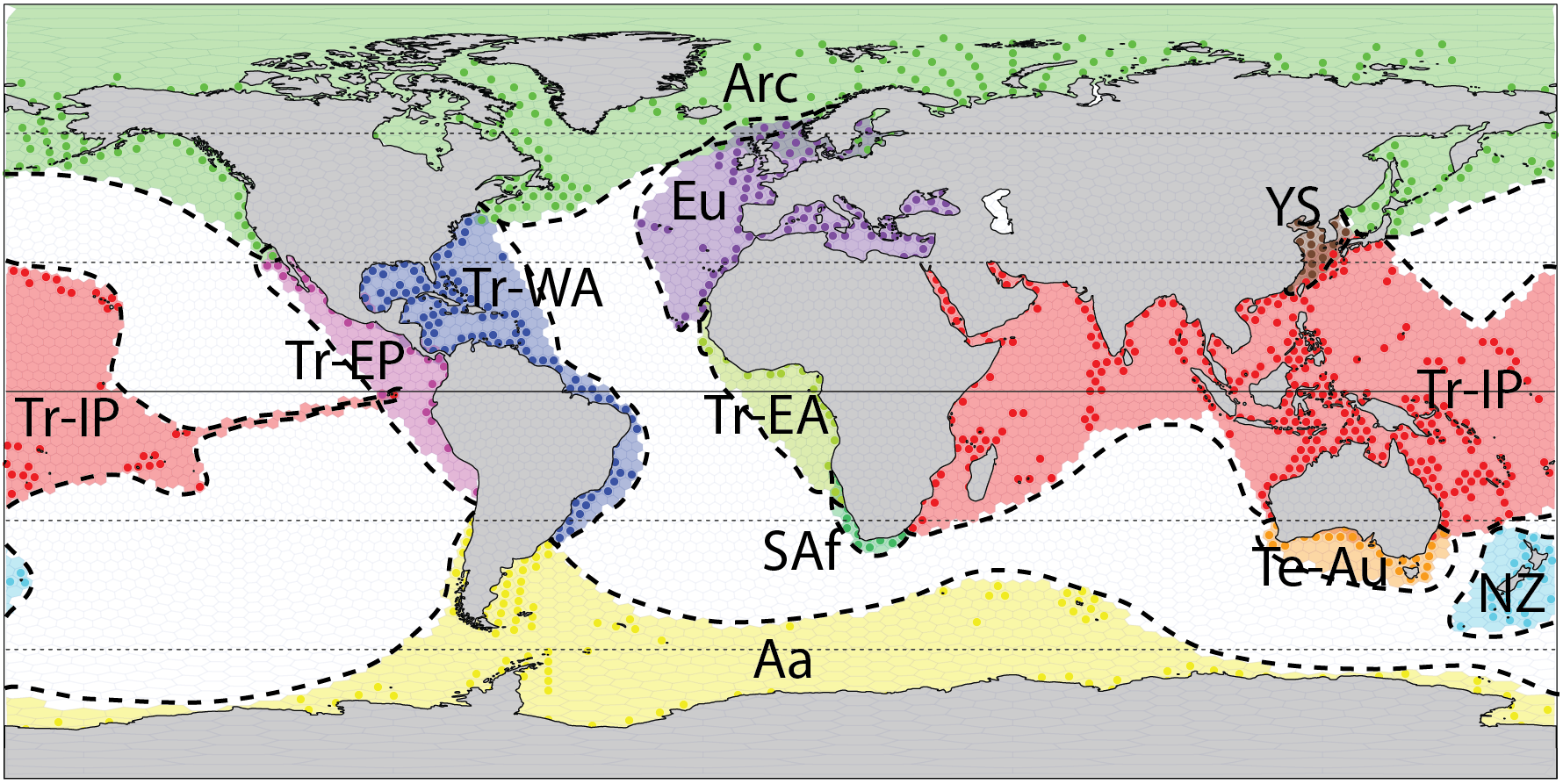
Coastal benthic biogeographic regions are stable across the millennia
A new study published in Global Ecology and Biogeography, using recent occurrence data from the Ocean Biogeographic Information System (OBIS) and fossil data from the Paleobiology Database, showed that modern and the near past global ecosystem feature highly similar biogeographic ...
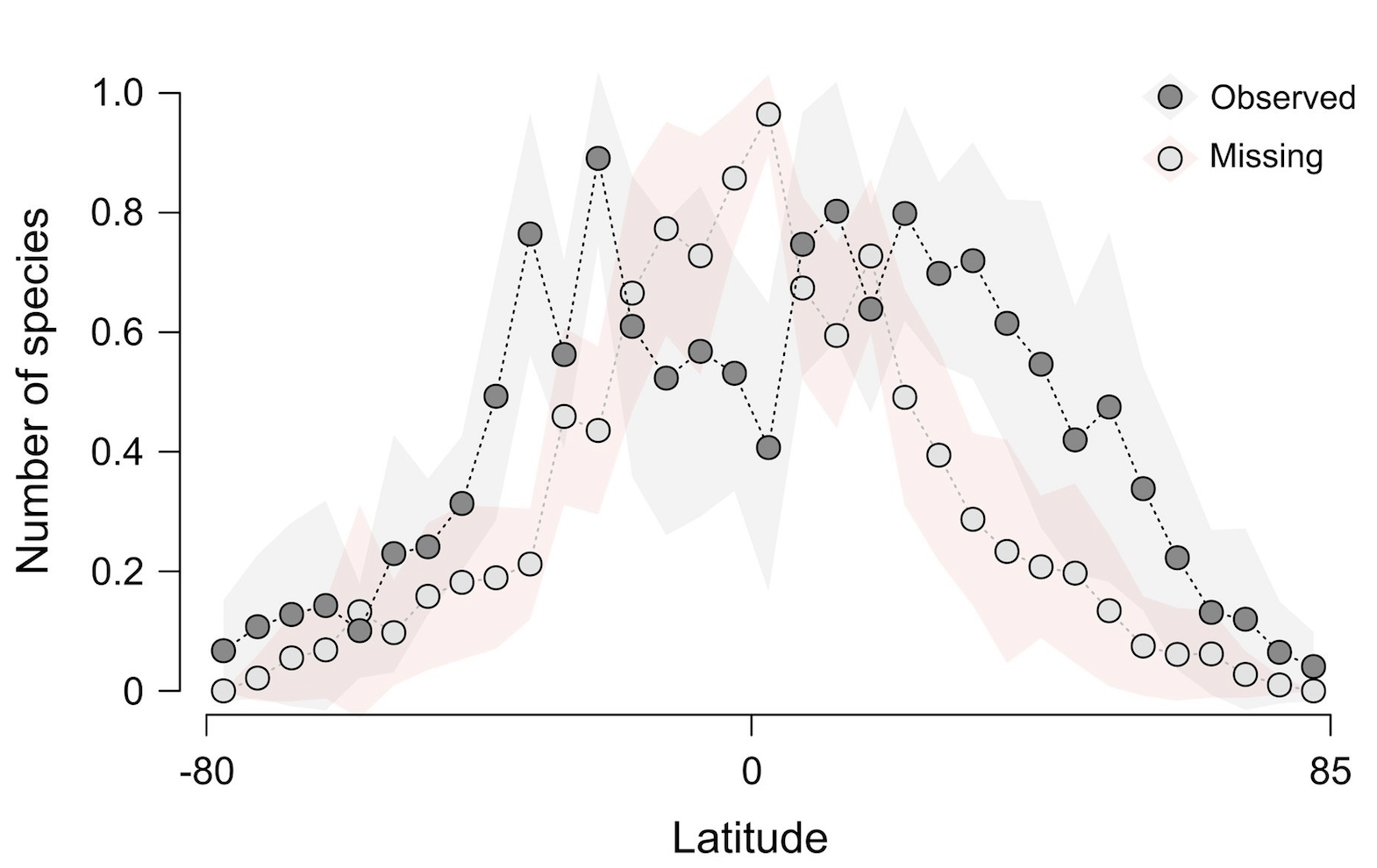
Mapping knowledge gaps in marine diversity reveals a latitudinal gradient of missing species richness
In a study published in Nature Communications in November 2018, researchers from Federal University of Goiás explored global spatial patterns in species richness by analyzing more than 3 million occurrence records of almost 35,000 marine species from OBIS and other ...
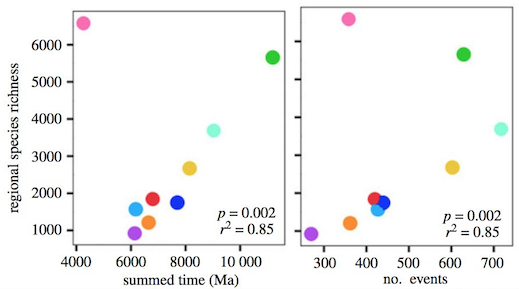
High species richness in the Central Indo-Pacific explained by time and many colonization events
In a study published in Proceedings of the Royal Society B in October 2018, Miller et al. explored how the timing and rates of fundamental evolutionary processes—speciation, extinction, and colonization events have jointly shaped differences in regional species richness in ...
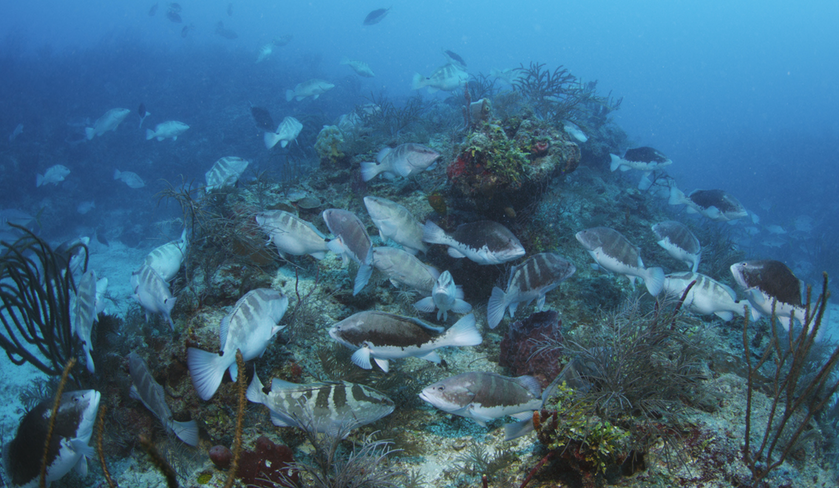
OBIS data reveals that climate change will exacerbate the impact of historical overfishing on an iconic Caribbean reef fish
Species distribution models using data from OBIS demonstrated that future conservation efforts of the Nassau Grouper (and endangered fish species occurring in the Caribbean region) may need to be adjusted to account for changes in the seasonality of spawning, a ...
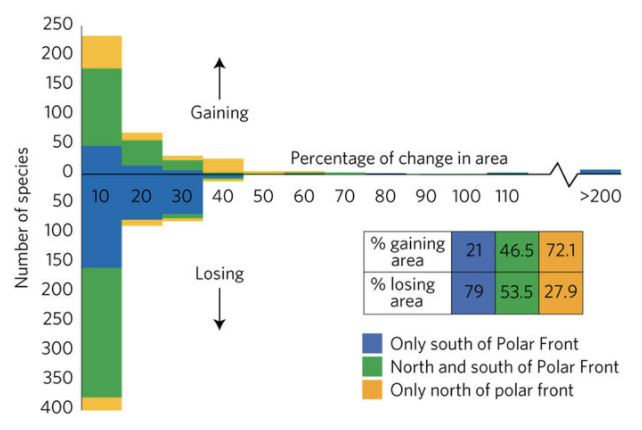
More losers than winners for Southern Ocean marine life in a warmer future.
A study of the marine invertebrates living in the seas around Antarctica published in the journal Nature Climate Change using data from OBIS revealed that 79% of Antarctica’s endemic species do face a significant reduction over the next century as ...
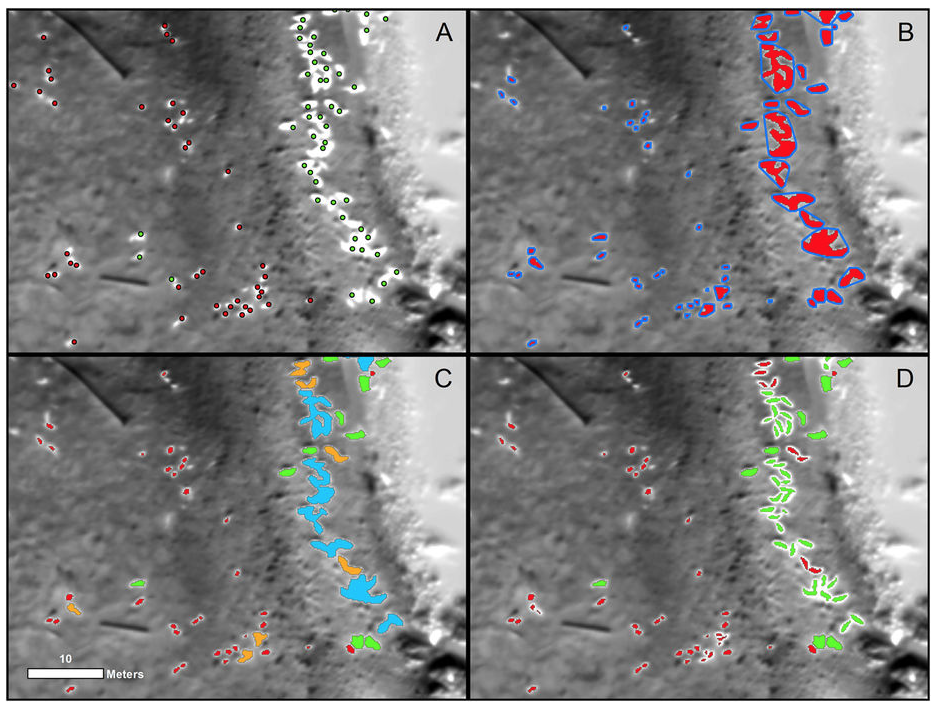
Counting seals with drones and thermal imagery
Alexander Seymour and his team at the Duke University Marine Laboratory, and Fisheries and Oceans Canada counted 3,355 grey seals using unoccupied aerial vehicles (UAV) with thermal sensors. The case study was published in Nature’s Scientific Reports journal. The data ...
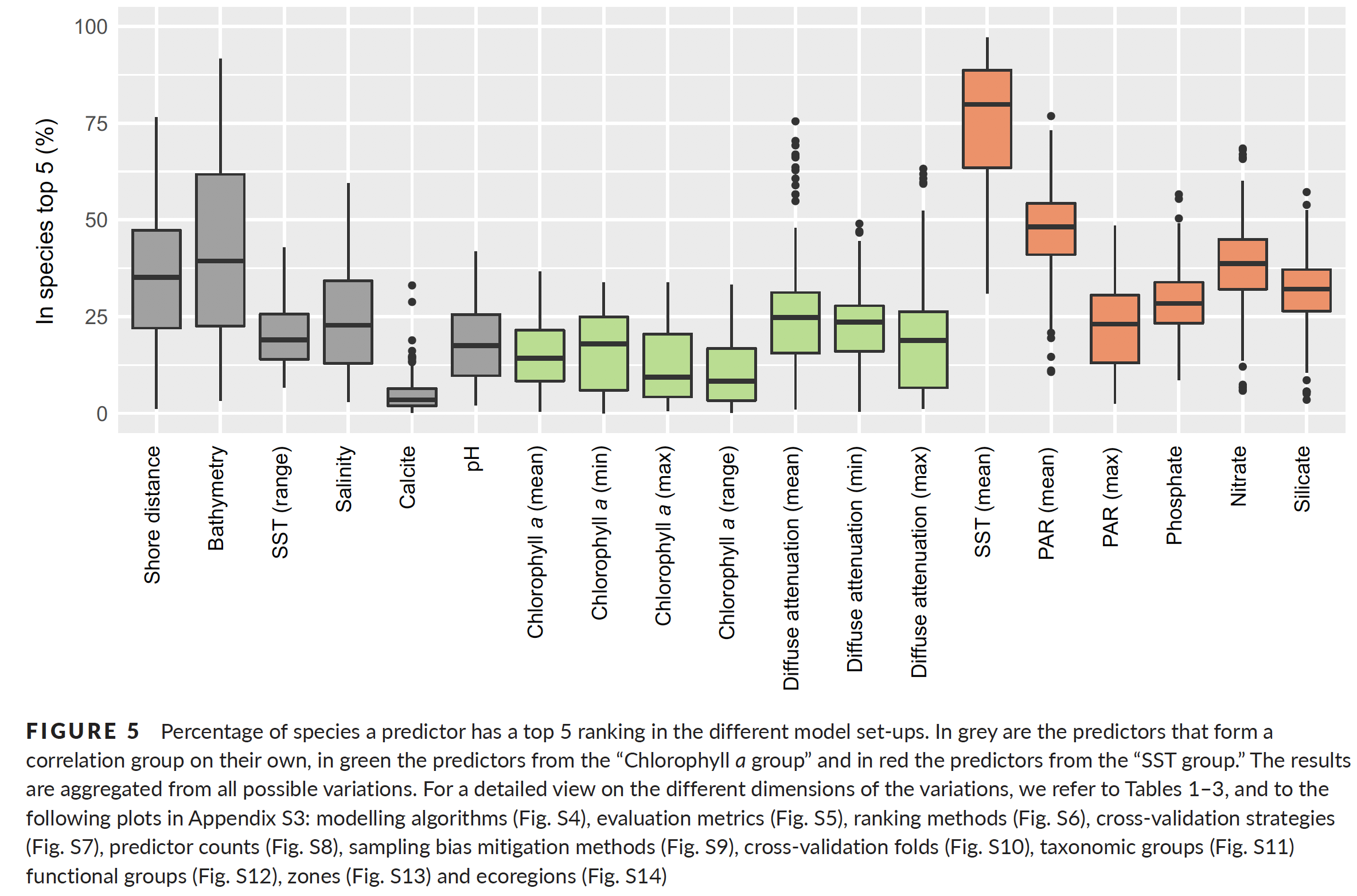
Identifying relevant predictors for marine species distribution modelling with MarineSPEED
Bosch et al. (2017) showed that while temperature is a relevant predictor of global marine species distributions, considerable variation in predictor relevance is linked to the species distribution modelling (SDM) set-up. A standardized benchmark dataset (MarineSPEED) was created by combining ...
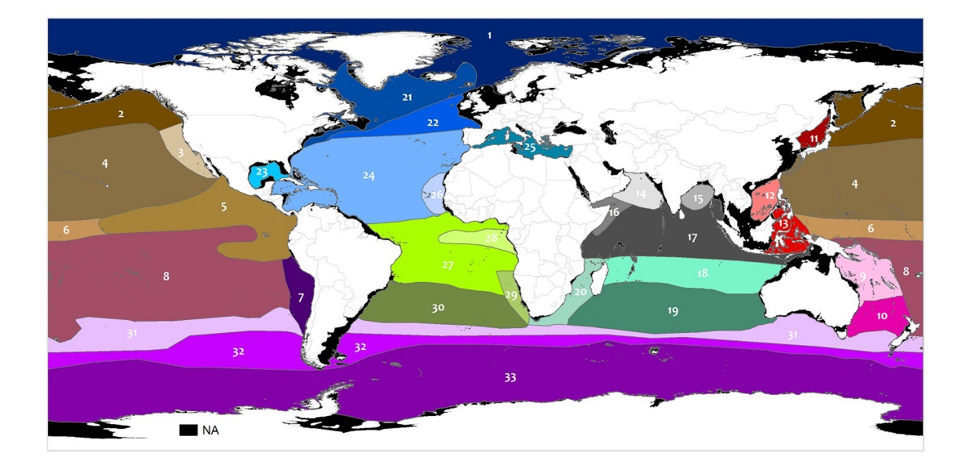
Illuminating the Twilight Zone - expert panel maps the world's mesopelagic zone
A new study using data from OBIS identified 33 mesopelagic ecoregions of the world’s oceans. This is a first step towards a dynamic mesopelagic biogeography, which forms an important baseline to assess human impacts on the mesopelagic, or "twilight" zone; ...
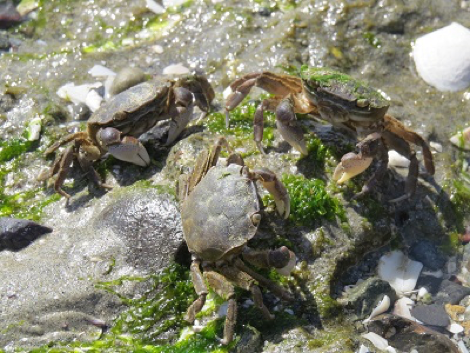
Plant feeding promotes diversity in the Crustacea
Poore et al. (2017) showed that the ability to eat seaweeds and plants promotes diversity among crustaceans, just as it does among herbivorous insects. The records from OBIS for each clade were analysed to estimate range size, latitudinal range and ...
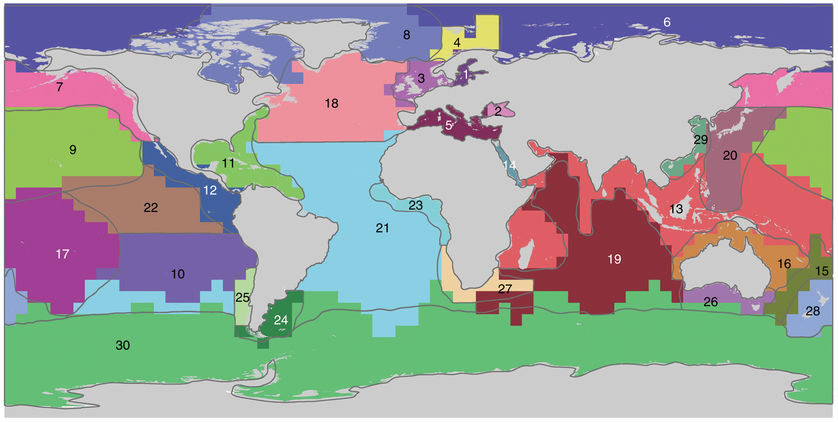
Analysis of OBIS maps distinct biogeographic realms in the world ocean
Analysis of OBIS demonstrates for the first time that the ocean can be classified into distinct realms based on the uniqueness of their animals and plants. The findings have been published in the journal Nature Communications.
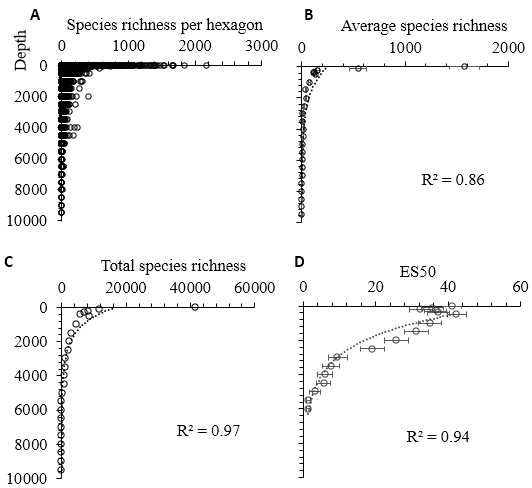
Highest marine species richness is found in tropical coastal areas
Costello & Chaudhary (2017) used data from OBIS to show that marine species richness is higher in the coastal tropics and decreases with depth. The paper reviews what factors have led to species diversification, and how this knowledge informs conservation ...
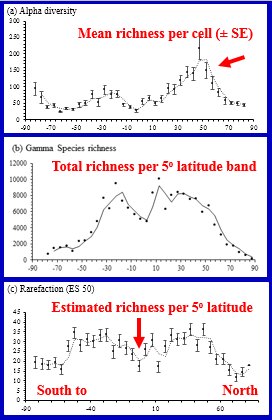
Too hot at the Equator?
A recent review of the literature and available data on latitudinal gradients in marine species richness in OBIS found that in all previous studies, and for a dataset of 65 000 species, they were bimodal, with a dip in richness ...
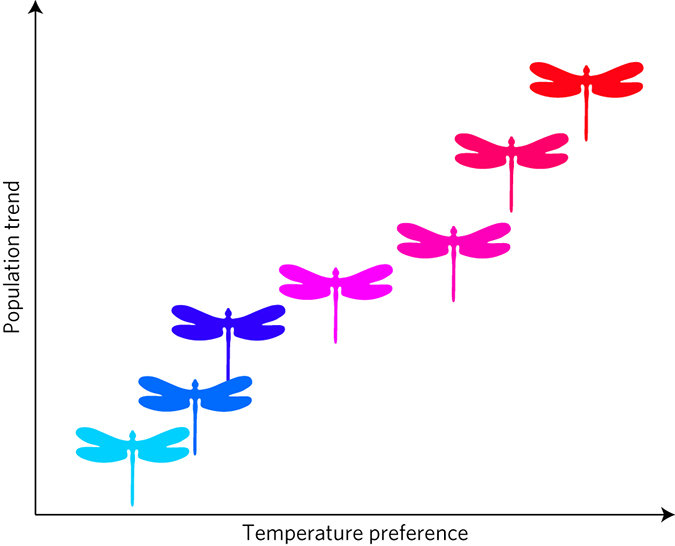
Some like it warm? Warm-dwelling species have increased in response to climate change in western/central Europe
A new study published in Nature Ecology & Evolution, using data from OBIS, showed effects of climate change on species’ abundances, with an increase of warm-dwelling marine fish in the North Sea.
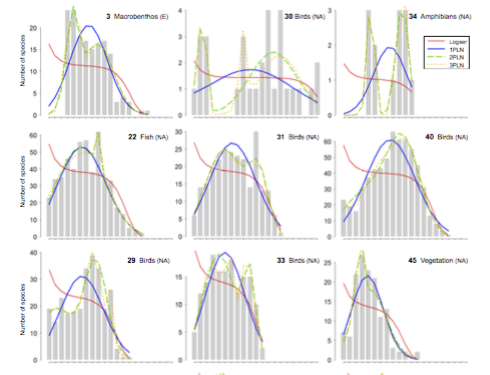
Multimodal SADs linked to spatial and taxonomic breadth
Species abundance distribution (SAD) models using OBIS and GBIF data reveals multimodality patterns are rather common and increase with ecological heterogeneity.
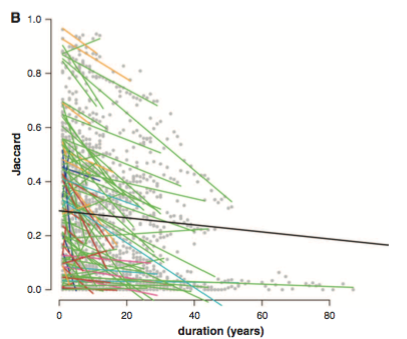
Systematic biodiversity change - global reorganisation of species pools
A global study based on time series datasets from OBIS published in Science in 2014 detected temporal species community composition change, not systematic loss of diversity.
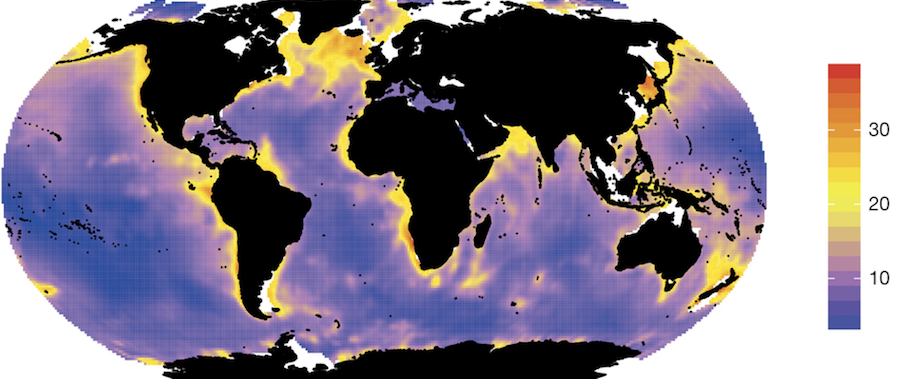
Deep-sea diversity patterns are shaped by energy availability
The deep ocean is the largest and least-explored ecosystem on Earth, and a uniquely energy-poor environment. The distribution, drivers and origins of deep-sea biodiversity remain unknown at global scales. Here we analyse a database of more than 165,000 distribution records ...
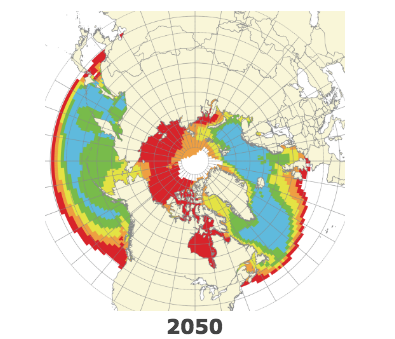
Pteropods at risk
Pteropods, also called sea butterflies, are tiny snails living in the water column that play a critical role in various ecosystems as prey for a variety of predators. There is a great concern about the potential impact of global change ...
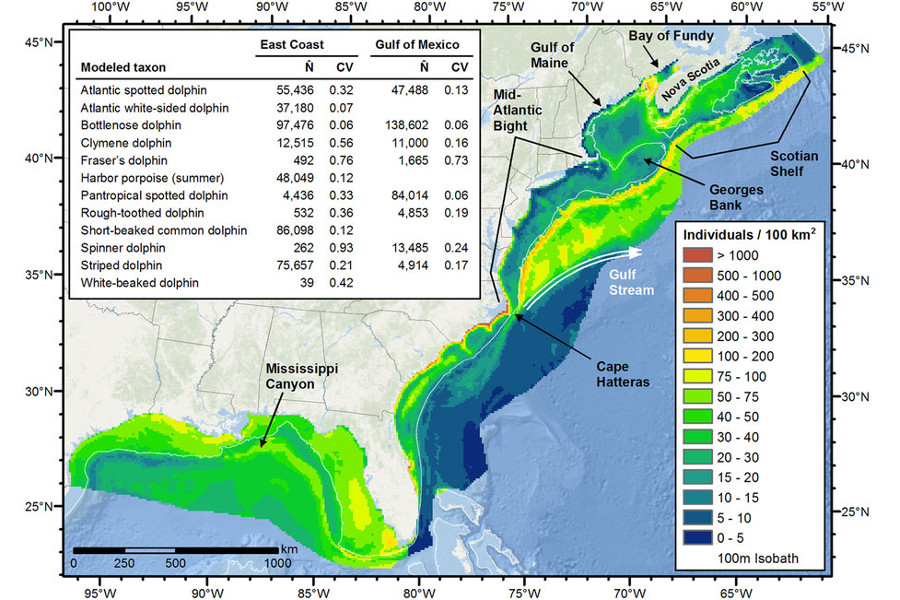
Habitat-based cetacean density models for the U.S. Atlantic and Gulf of Mexico
Cetaceans are protected worldwide but vulnerable to incidental harm from an expanding array of human activities at sea. Managing potential hazards to these highly-mobile populations increasingly requires a detailed understanding of their seasonal distributions and habitats. Pursuant to the urgent ...

